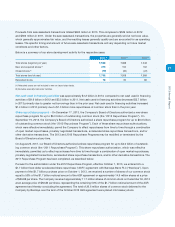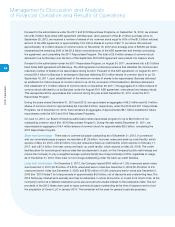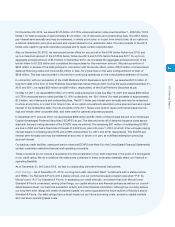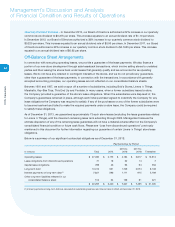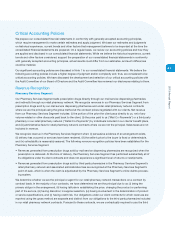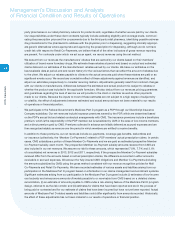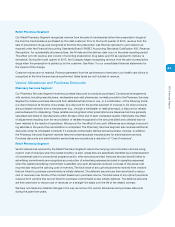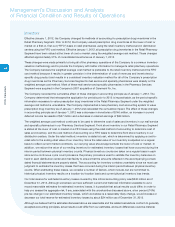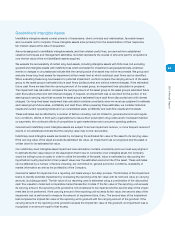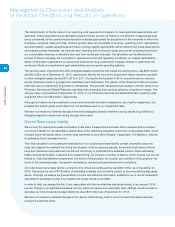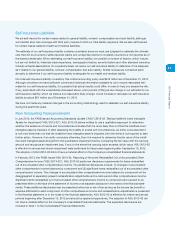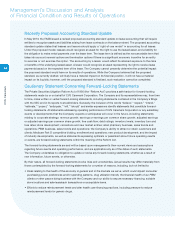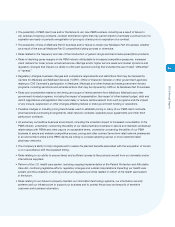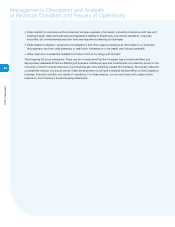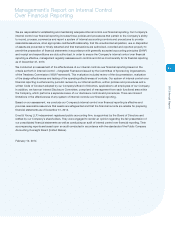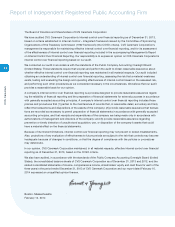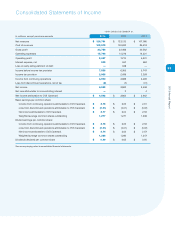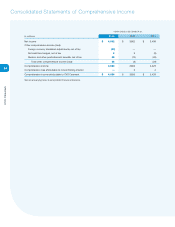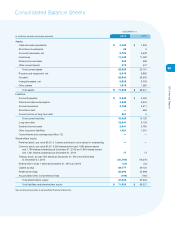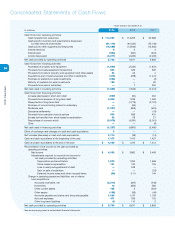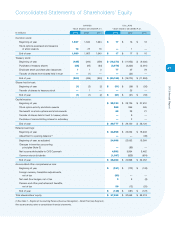CVS 2013 Annual Report Download - page 49
Download and view the complete annual report
Please find page 49 of the 2013 CVS annual report below. You can navigate through the pages in the report by either clicking on the pages listed below, or by using the keyword search tool below to find specific information within the annual report.
47
2013 Annual Report
Self-Insurance Liabilities
We are self-insured for certain losses related to general liability, workers’ compensation and auto liability, although
we maintain stop loss coverage with third party insurers to limit our total liability exposure. We are also self-insured
for certain losses related to health and medical liabilities.
The estimate of our self-insurance liability contains uncertainty since we must use judgment to estimate the ultimate
cost that will be incurred to settle reported claims and unreported claims for incidents incurred but not reported as of
the balance sheet date. When estimating our self-insurance liability, we consider a number of factors, which include,
but are not limited to, historical claim experience, demographic factors, severity factors and other standard insurance
industry actuarial assumptions. On a quarterly basis, we review our self-insurance liability to determine if it is adequate
as it relates to our general liability, workers’ compensation and auto liability. Similar reviews are conducted semi-
annually to determine if our self-insurance liability is adequate for our health and medical liability.
Our total self-insurance liability covered by this critical accounting policy was $612 million as of December 31, 2013.
Although we believe we have sufficient current and historical information available to us to record reasonable esti-
mates for our self-insurance liability, it is possible that actual results could differ. In order to help you assess the risk,
if any, associated with the uncertainties discussed above, a ten percent (10%) pre-tax change in our estimate for our
self-insurance liability, which we believe is a reasonably likely change, would increase or decrease our self-insurance
liability by about $61 million as of December 31, 2013.
We have not made any material changes in the accounting methodology used to establish our self-insurance liability
during the past three years.
New Accounting Pronouncements
In July 2012, the FASB issued Accounting Standards Update (“ASU”) 2012-02,
Testing Indefinite-Lived Intangible
Assets for Impairment
(“ASU 2012-02”). ASU 2012-02 allows entities to use a qualitative approach to determine
whether the existence of events and circumstances indicates that it is more likely than not that the indefinite-lived
intangible asset is impaired. If, after assessing the totality of events and circumstances, an entity concludes that it
is not more likely than not that the indefinite-lived intangible asset is impaired, then the entity is not required to take
further action. However, if an entity concludes otherwise, then it is required to determine the fair value of the indefi-
nite-lived intangible asset and perform the quantitative impairment test by comparing the fair value with the carrying
amount and recognize an impairment loss, if any, to the extent the carrying value exceeds its fair value. ASU 2012-02
is effective for annual and interim impairment tests performed for fiscal years beginning after September 15, 2012.
The adoption of ASU 2012-02 did not have a material effect on the Company’s consolidated financial statements.
In February 2013, the FASB issued ASU 2013-02,
Reporting of Amounts Reclassified Out of Accumulated Other
Comprehensive Income
(“ASU 2013-02”). ASU 2013-02 adds new disclosure requirements for items reclassified
out of accumulated other comprehensive income. The additional disclosures include: (1) changes in accumulated
other comprehensive income balances by component and (2) significant items reclassified out of accumulated other
comprehensive income. The changes in accumulated other comprehensive income balance by component will be
disaggregated to separately present reclassification adjustments and current-period other comprehensive income.
Significant items reclassified out of accumulated other comprehensive income by component are required to be
presented either on the face of the statement of income or as separate disclosure in the notes to the financial state-
ments. These additional disclosures may be presented before-tax or net-of-tax as long as the income tax benefit or
expense attributed to each component of other comprehensive income and reclassification adjustments is presented
in the financial statement or in the notes to the financial statements. ASU 2013-02 is effective for interim and annual
periods beginning after December 15, 2012 and should be applied prospectively. The adoption of ASU 2013-02 did
not have a material effect on the Company’s consolidated financial statements. The expanded disclosures are
included in Note 1 to the Consolidated Financial Statements.


